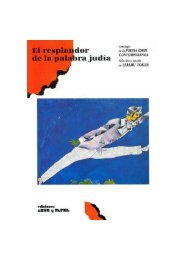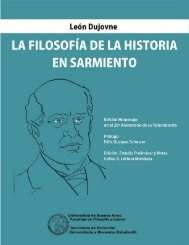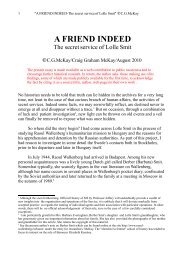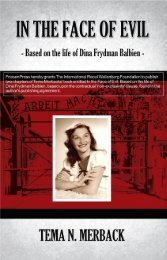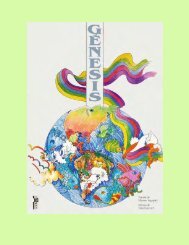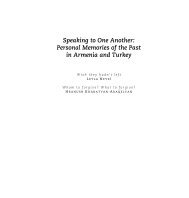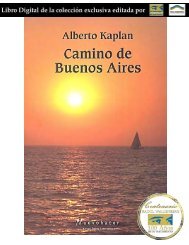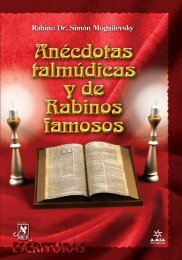We were There - The International Raoul Wallenberg Foundation
We were There - The International Raoul Wallenberg Foundation
We were There - The International Raoul Wallenberg Foundation
You also want an ePaper? Increase the reach of your titles
YUMPU automatically turns print PDFs into web optimized ePapers that Google loves.
When <strong>Wallenberg</strong> arrived in Budapest, in July 1944, the Germans had already deported more than<br />
400,000 Jews. <strong><strong>The</strong>re</strong> <strong>were</strong> only 200,000 left in the capital and it was not a matter of wasting time. <strong>The</strong><br />
young Swede used all the means, conventional and otherwise, to save lives. He surprised everyone with<br />
the design of a protective passport, with highly visible coats of arms of the Swedish royal house (neutral<br />
during the war), with no international value, but impressive in the eyes of the German bureaucracy.<br />
He also created the so-called “Swedish homes” that accommodated families like Ladislao’s and in a short<br />
time these buildings with Swedish flag protected more than 15,000 Jews. When conditions <strong>were</strong> totally<br />
desperate, <strong>Wallenberg</strong> issued a rustic version of his passport, consisting of a sheet of paper bearing his<br />
signature. In the middle of the chaos, that paper was, at times, the difference between life and death.<br />
<strong>The</strong> diplomat did not hesitate to threaten or bribe Germans so that they liberated those who had no<br />
Swedish passport. When mass deportations by train stated, there are people who saw him on the roofs of<br />
the trains handing out piles of safe-conducts to the people inside the cars (see “Thanks…).<br />
By the time the Soviet troops arrived in Budapest in the middle of January 1945, <strong>Wallenberg</strong> is supposed<br />
to have rescued around 100,000 Jews from death. But he could not save himself. On January 17th of that<br />
year he was last seen, under Soviet escort, with his driver on a visit -in theory- to a USSR military base in<br />
southern Budapest. He never returned.<br />
It is not known whether he is alive or dead but the Russians themselves said that he had passed away in<br />
1947, in a Soviet prison. <strong>The</strong> reasons why he had been arrested remain a mystery. Maybe the Russians<br />
suspected that <strong>Wallenberg</strong> was an American spy, or that maybe they did not trust the Swedish contacts<br />
with the Germans.<br />
Today some people call him “Hero without a grave.” But for Ladislao, <strong>Wallenberg</strong> is more than that. In<br />
Buenos Aires, where he arrived in 1948 to meet up with his sister once again, the grandfather gives a<br />
thankful look at the portrait of the young man. ”He is my God,” he mumbles about the man who saved his<br />
life.<br />
© Copyright 1996- // Clarín.com. All rights reserved Director: Ernestina Herrera de Noble<br />
23







